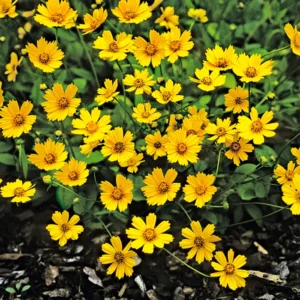Slender Mountain Mint-Grows in full sun and partial shade with dry to moist soils. This Mountain Mint has a long blooming period, and is one of the number one pollinator plants. This is a very fragrant plant, and you can rub the leaves on your skin to repel mosquitoes. This plant supports Wavy-lined Emerald (Synchlora aerata) larvae. This plant attracts bees, butterflies and other pollinators including native sweat bees. Slender Mountain Mint is not as aggressive as some of the other native Mountain Mints.
Host plant for the Wavy-lined Emerald. Drought and Deer Resistant!





